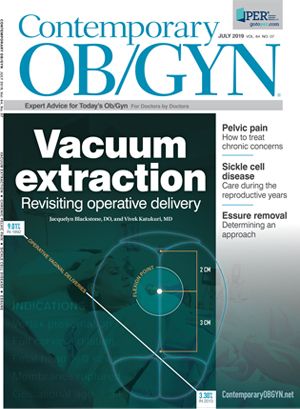How likely are adolescents to fill antibiotic prescriptions for STIs?
A recent study indicates that providers may need to rethink their intervention methods when counseling adolescents.
©4frame group - stock.adobe.com

Adolescents are disproportionately affected by sexually transmitted infections (STIs), but whether they actually fill antibiotic prescriptions provided in the emergency department (ED) setting is largely unknown. Researchers from Washington, DC, recently attempted to answer that question, as reported in JAMA Pediatrics.
For the retrospective cohort study, described in a researcher letter, visits to two EDs by adolescents aged 13 to 19 were analyzed. The focus was on encounters associated with a diagnosis of pelvic inflammatory disease (PID) for which outpatient antimicrobial treatment was prescribed between January 1, 2016 and December 31, 2017.
The primary outcome of the study was prescription filling of STI-related antimicrobial treatment and secondary outcomes included patient-level and visit-level factors associated with prescription filling. Filling data were acquired through a program in the hospital’s electronic health record that collects data from participating pharmacies and insurance plans.
During the study period, 696 ED visits resulted in an STI diagnosis. Outpatient prescriptions for antimicrobial treatment were given to 208 patients with such diagnoses (cervicitis/urethritis n=65; 31.2%) or (PID n=143; 68.8%). Of the prescriptions, 57.7% (95% CI 50.9%-64.5%) were filled. Using multivariable analysis, the only factor associated with prescription filling was hospital admission (73.7% vs 54.1%; AOR 2.3; 95% CI 1.0-5.0). The authors noted that patients admitted likely had more severe symptoms, and as a result, they may have been more motivated to fill a prescription for symptom relief.
The authors believe their findings indicate that more novel intervention needs to be explored to ensure that prescriptions given to adolescents for STIs are being filled. In-depth conversations about the necessity of antibiotic treatment for STIs could be beneficial, as could a consultation with an adolescent medicine specialist. Future studies should focus on understanding the barriers that underly prescription filling for adolescents to promote STI-related treatment adherence.

FDA grants 510(k) clearance to cobas liat STI multiplex assay panels
Published: January 22nd 2025 | Updated: January 22nd 2025The new panels, leveraging rapid polymerase chain reaction technology, allow point of care sexually transmitted infection diagnosis in 20 minutes, enhancing targeted treatment and reducing follow-up losses.
Read More
Study finds lack of testing for gonorrhea, chlamydia during pregnancy
August 15th 2024Adherence to guideline-based laboratory testing and treatment of chlamydia and gonorrhea in pregnant women has been found to be suboptimal in the United States, indicating the potential for negative effects on newborn and maternal health.
Read More
